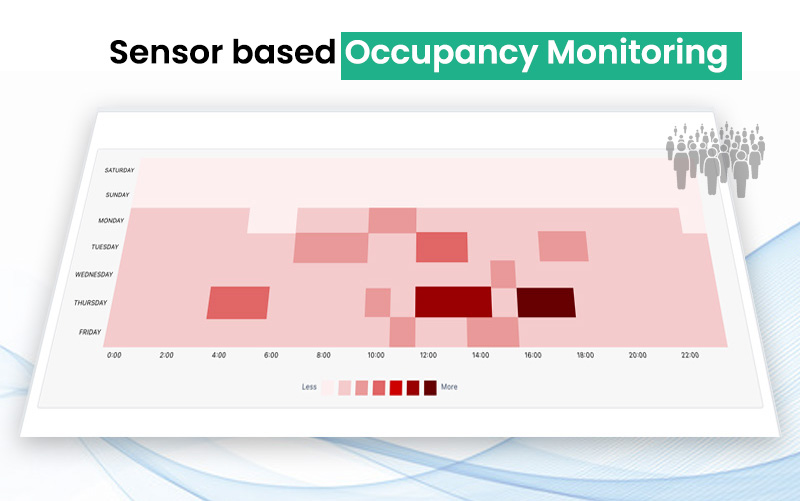The Significance of Occupancy Monitoring
In today’s world of rising energy costs, space optimization demands, and a growing focus on occupant well-being, traditional building management methods are reaching their limits. This is where occupancy monitoring steps in, offering a data-driven approach to managing spaces more effectively. But what exactly is occupancy monitoring, and why is it becoming increasingly important?
What is Occupancy Monitoring?
Occupancy monitoring involves tracking the number of people present in a specific area at a given time. This can be achieved through various technologies, with advanced sensor-based systems being the most privacy-conscious and reliable option. Unlike traditional methods that rely on cameras, these sensors detect motion or changes in environmental factors like CO2 levels to determine occupancy without infringing on individual privacy.
Why Occupancy Monitoring Matters
The benefits of occupancy monitoring are extensive and extend far beyond simply knowing how many people are in a room. Here’s how it can revolutionize space management:
- Energy Efficiency: Buildings are notorious for consuming energy even when unoccupied. Lights remain on, HVAC systems continue to hum, and resources are wasted. Occupancy monitoring allows for adjustments based on real-time usage. When a room is empty, systems can automatically adjust or power down, leading to significant energy cost savings and a smaller environmental footprint.
- Optimizing Your HVAC System: Not all areas within a building require the same temperature and ventilation settings. Occupancy data helps identify areas with consistently high or low usage. This information can be used to optimize HVAC operation, ensuring thermal comfort for occupants while minimizing unnecessary energy expenditure. Imagine classrooms automatically adjusting temperature based on student presence, or conference rooms kicking in the AC only when a meeting is in progress.
- Space Allocation: Ever feel like your office layout is inefficient? Occupancy monitoring can be your space allocation wizard. By understanding how different areas are utilized, you can optimize space allocation. Underutilized conference rooms, for example, could be converted into flexible work areas, common areas could be adjusted based on peak usage times, or even entire floors could be repurposed based on occupancy trends.
- Comfort for All: Occupancy monitoring can act as an early warning system for overcrowding. By identifying areas prone to exceeding comfortable capacity, proactive measures can be taken. This could involve implementing reservation systems for high-demand spaces, adjusting layouts to improve flow, or even sending real-time alerts to encourage occupants to spread out.
- Staff Scheduling Efficiency: Occupancy data reveals usage patterns throughout the day or week. This helps identify times when specific areas are most heavily used and periods of low activity. Armed with this information, businesses can adjust staffing schedules to align with actual needs. Imagine libraries having more staff present during peak student study hours or retail stores scheduling additional cashiers during anticipated shopping rushes.
The Power of Privacy-Focused Data
The beauty of modern occupancy monitoring systems lies in their ability to gather valuable data without compromising privacy. Unlike camera-based systems that can raise privacy concerns, sensor-based solutions offer a discreet and anonymous approach. This ensures occupant comfort and trust while still providing the critical data needed for informed decision-making.
HibouAir: Where Smart Occupancy Meets Healthy Air
HibouAir goes beyond just measuring air quality. This innovative device leverages its smart analytical dashboard to integrate occupancy data alongside real-time and historical air quality information. Unlike intrusive camera-based systems, HibouAir relies on a suite of sensors—including CO2, PM1.0, PM10, PM2.5, pressure, temperature, humidity, and VOC—to gather real-time and historical data without compromising individual privacy. This comprehensive approach allows for a holistic understanding of your space. With HibouAir, you can:
- Optimize space usage based on occupancy patterns.
- Reduce energy consumption by adjusting resources based on needs.
- Ensure a comfortable and healthy environment by monitoring air quality and adjusting ventilation as needed.
By embracing the power of occupancy monitoring, we can unlock a future where buildings are not just functional spaces, but dynamic environments that cater to our needs, optimize resources, and prioritize the well-being of everyone within them.

